As mentioned in a posting on Top 10 Things To Do in Japan, “Sushi 寿司” is one of the most famous Japanese dishes around the world, and you definitely should try it in your life.
What fish comes to mind when you think of sushi? Salmon, tuna, shrimps and prawns? In Japan, there is a surprising variety of raw fish, seafood, meat, and vegetables used as the toppings.

In this article, I would like to help you get clearer pictures on all the sushi ingredients.
- 1. Tuna (Maguro)
- 2. Chu-toro Tuna
- 3. O-toro Tuna
- 4. Salmon
- 5. Toro Salmon
- 6. Tobiko (Flying fish Roe)
- 7. Masago (Capelin Roe)
- 8. Kazunoko カズノコ (Herring Roe)
- 9. Ikura (Salmon Roe)
- 10. Aji (Horse Mackerel)
- 11. Saba (Mackerel)
- 12. Iwashi (Sardine)
- 13. Kanpachi (Greater Amberjack )
- 14. Buri (Yellowtail)
- 15. Engawa (Flatfish)
- 16.Katsuo (Bonito)
- 17. Tai (Sea Bream)
- 18. Kohada (Gizzard Shad)
- 19. Uni (Sea Urchin)
- 20. Hotate (Scallops)
- 21. Unagi (Freshwater Eel)
- 22. Ebi (Shrimps/Prawns)
- 23. Hokkigai ホッキガイ (Surf clam)
- 24. Wagyu (Japanese beef)
- 25.Tamagoyaki (Japanese rolled omelet)
- Conclusion
1. Tuna (Maguro)
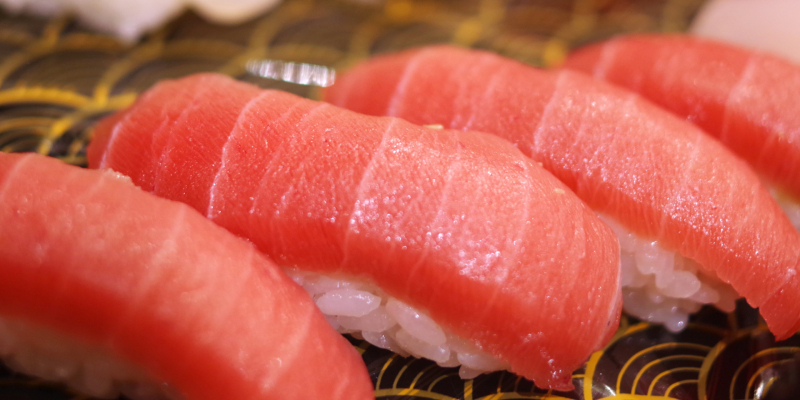
“Maguro マグロ” (Bluefin Tuna) is probably the most popular sushi topping in Japan. “Akami 赤身” (lean meat) from the back side of the fish is served raw or pickled in soy sauce at a reasonable price.
“Kuromaguro クロマグロ”, which can grow up to three meters in length, is consumed the most of all types of tuna for sushi. “Mebachimaguro メバチマグロ” has a light aftertaste which is preferred by people who don’t like fatty fish.
2. Chu-toro Tuna
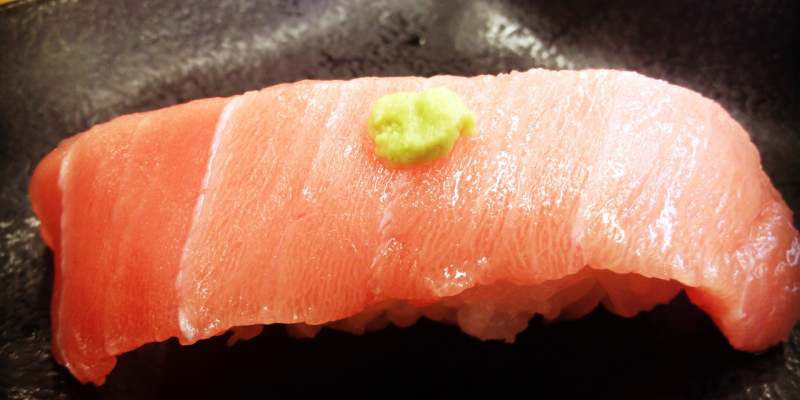
“Toro トロ” refers to the fatty part of fish, and it is divided into two categories: “Chu-toro 中トロ” and “O-toro 大トロ”.
Chu-toro tuna is taken from the side belly portion of the fish. It is softer than Akami, but has a less fat content than O-toro. This meat is a highly prized sushi topping due to its melt-in-your-mouth texture.
3. O-toro Tuna
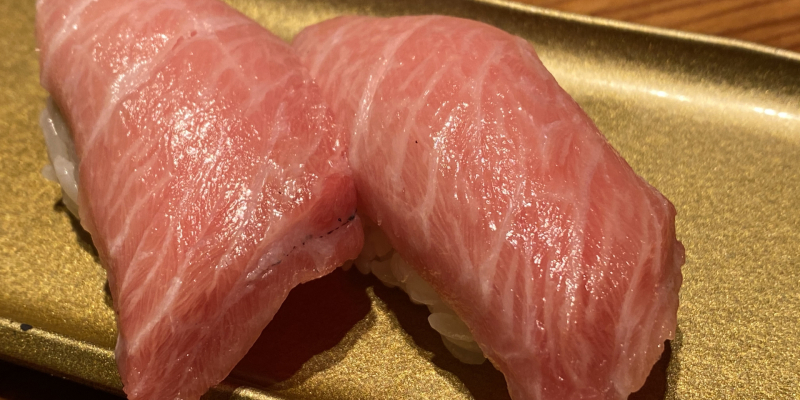
“O-toro 大トロ” is the fattiest part from the front belly of tuna. The sushi has been fascinating people by its rich tender texture and amazing marbled appearance.
O-toro is not commonly consumed outside of Japan. Once you taste it, you will definitely know how amazingly it tastes.
4. Salmon
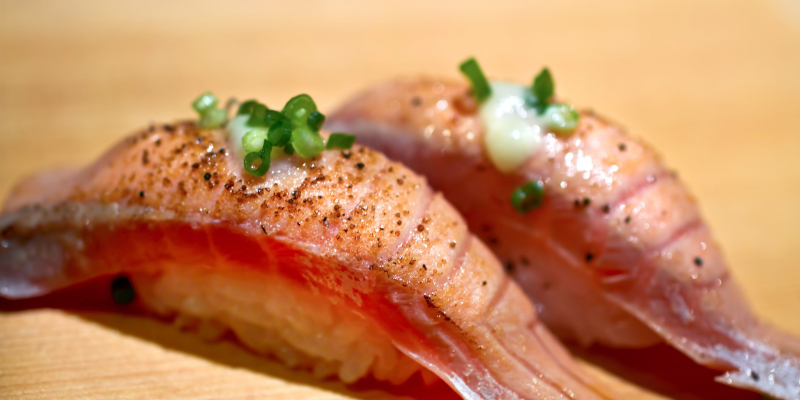
Although “Salmon サーモン” was not a traditional Japanese topping, it is definitely one of the most popular fish eaten for sushi around the world. The orange soft meat with white stripes has a mild and slightly sweet flavor.
Salom is served in various ways, such as raw, with sliced onion, or lightly grilled called Aburi-style. The variations make the fish a preferred choice for people, children and adults alike.
5. Toro Salmon
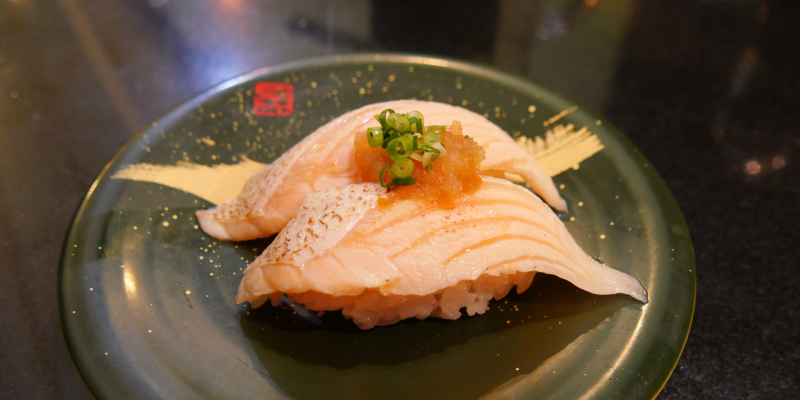
“Toro salmon トロサーモン” is from the belly portion of the fish. The fatty cut has an extremely rich and tender texture similar to the tuna counterpart. It is served raw or slightly grilled.
6. Tobiko (Flying fish Roe)
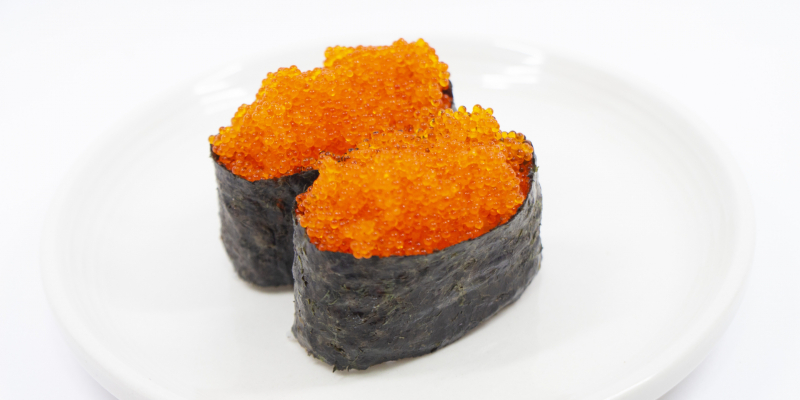
“Tobiko トビコ” is eggs of tropical flying fish. The orange color eggs can be seen as a popular topping sprinkled over sushi rolls in Japanese restaurants around the world. It has an amazing mild salty taste and crunchy texture.
7. Masago (Capelin Roe)
“Masago マサゴ” refers to capelin roe pickled in salt and colored reddish orange. This fish is called “Shisyamo ししゃも” and often grilled with its roe intact in Japanese cuisine. Masago tastes and looks similar to Tobiko, so it is often used as the substitute because of its relatively lower price.
8. Kazunoko カズノコ (Herring Roe)
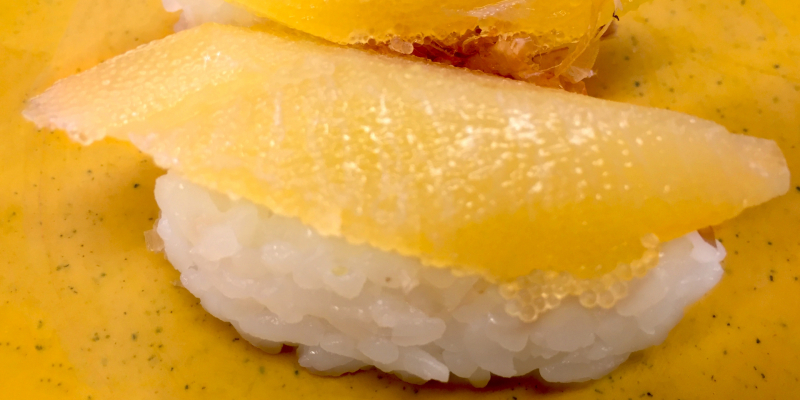
“Kazunoko カズノコ” (Herring roe) is another type of fish roe commonly used in Japanese cuisine. The yellow fish eggs are normally sundried or pickled in salt.
Kazunoko has a similar crunchy texture to Tobiko, but the eggs are slightly bigger. It is often fastened to a bed of rice using a nori strip.
9. Ikura (Salmon Roe)
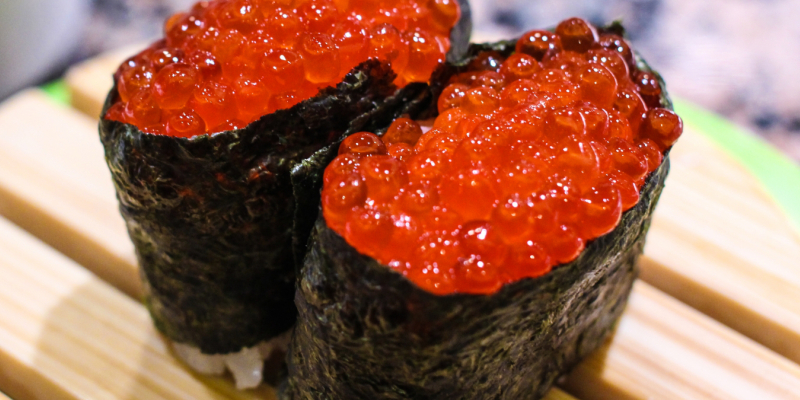
“Ikura いくら” (Salmon Roe) is glistening orbs of salmon roe cured in soy sauce. It has a mild salty flavor and popping texture. The pleasures of eating ikura is its jewelry-like appearance and feeling of the eggs as they burst in your mouth.
10. Aji (Horse Mackerel)
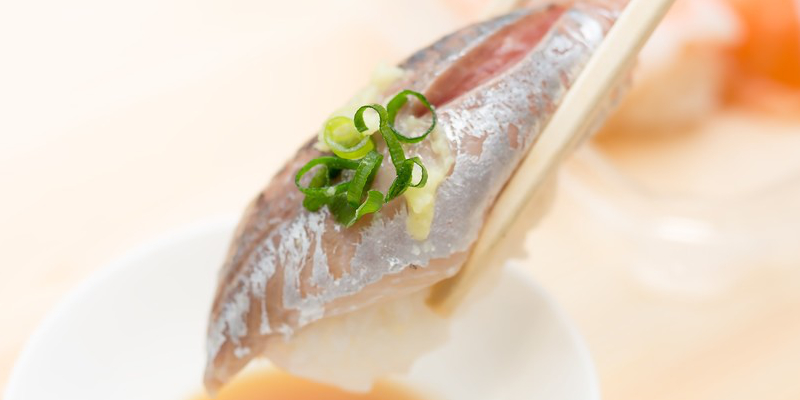
“Aji アジ” (Horse Mackerel) is a representative silver-skinned fish used in Japanese cuisine. It is easily available, inexpensive, and high content of omega 3.
There are a wide variety of the Aji family around the world. They are from “Ma-aji マアジ” that is caught and consumed the most in Japan, to “Shima-aji シマアジ” which is popular for sushi because of its rich taste. It is served raw or marinated with vinegar and salt. The beautiful translucent white meat is slightly salty and sweet.
11. Saba (Mackerel)
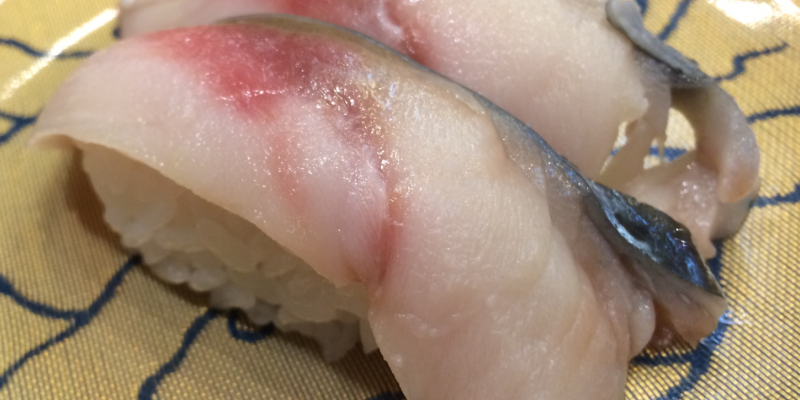
“Saba サバ” (Mackerel) is another popular silver-skinned fish in Japan because of its nutritional value and affordable price. It is rich in protein, minerals, and omega-3.
Saba goes bad quickly after being caught, so it is extremely important to use fresh fillets for sushi. The fish is often pickled in vinegar and salt, then it is called “Shime-saba しめサバ”. The mixture removes the excess fat and makes the meat smooth and soft.
12. Iwashi (Sardine)
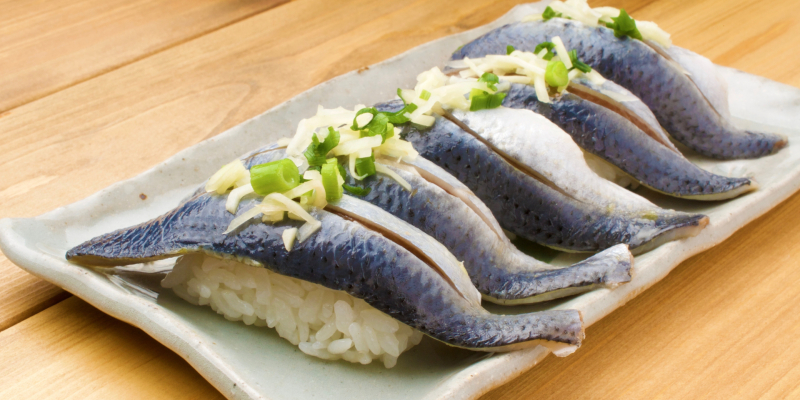
“Iwashi イワシ” (Sardine) has been eaten by Japanese people since ancient times. There are three types of sardine consumed by them ― “Ma-iwashi マイワシ”, “Urume-iwashi ウルメイワシ”, and “Katakuchi-iwashi カタクチイワシ”. Among them, Ma-iwashi is the most popular for sushi because of its fatty flavor. The shiny silver color meat is a rich source of nutrients and affordable as well as Aji and Saba. It is often paired with ginger and shallots to balance the richness.
13. Kanpachi (Greater Amberjack )
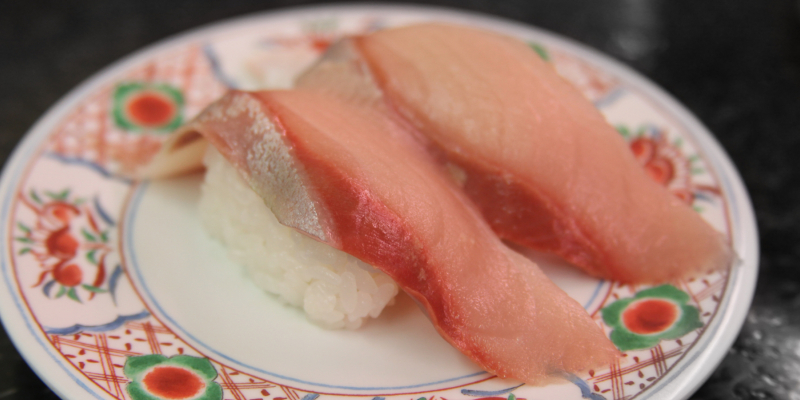
When some types of fish mature, the flavor and texture of the meat vary. Amberjack fish is called “Kanpachi カンパチ” in Japanese when the fish reaches a mid-maturity age. The raw meat is a highly prized topping for sushi because of its rich and mildly sweet flavor.
14. Buri (Yellowtail)
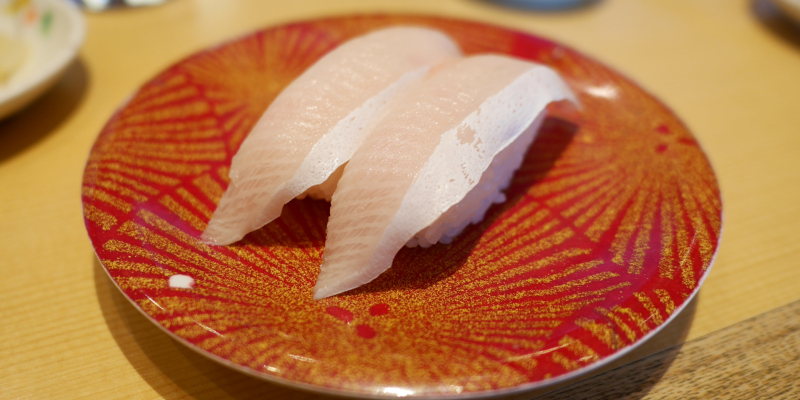
The Japanese have different names for yellowtail reaching different maturity levels, and when the fish matures fully, it is called “Buri ブリ”. The whitish meat has a rich and creamy flavor.
Buri is best in the fall and winter months, then the fish is called “Kan-buri 寒ブリ” (Cold Yellowtail) when caught in the season.
15. Engawa (Flatfish)
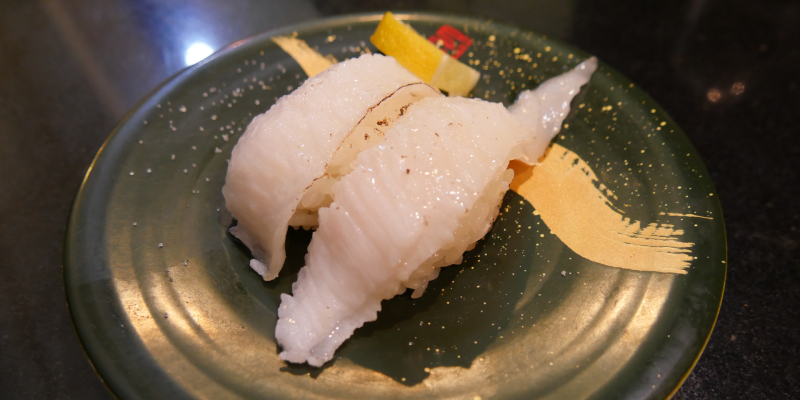
“Engawa エンガワ” is the frilly edge from the fin part of flatfish: “Karei カレイ” and “Hirameヒラメ”. Their white meat has a chewy texture and rich taste which makes it an amazing sushi topping. It is often served raw or marinated with ponzu sauce.
16.Katsuo (Bonito)
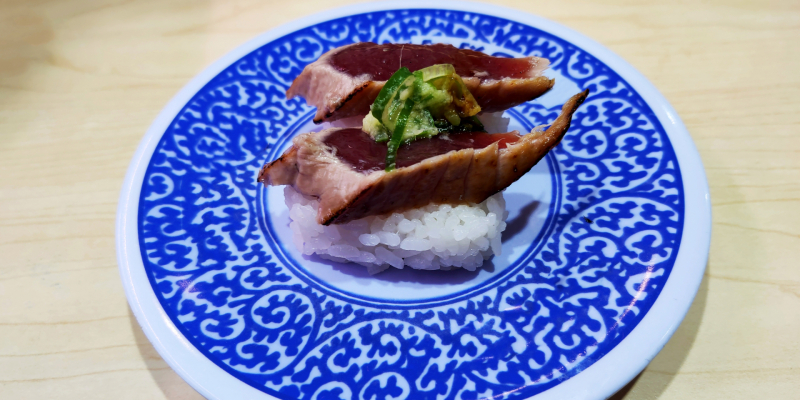
“Katsuo カツオ” (bonito) is one of the oldest traditional sushi toppings used since the Edo period (1603–1867). The red-purple color meat is rich in good quality protein and iron. It has two best seasons: spring and autumn when the flavor turns richer and fattier. It often comes with ginger to balance the oiliness.
17. Tai (Sea Bream)
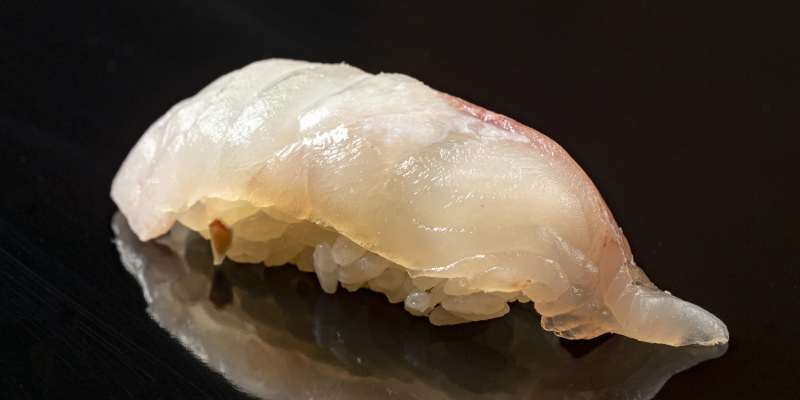
“Tai タイ” (Sea Bream) is an incredibly important fish for Japanese culture. This white fish is often served in times of celebration and special occasions because the word “Tai” reminds people of the Japanese word “Medetai めでたい” which means “happiness”. Therefore, the fish has been regarded as bringing luck.
Tai has a pinkish-white color and slightly sweet meaty texture. It is known to be low in fat and high in protein and vitamin.
18. Kohada (Gizzard Shad)
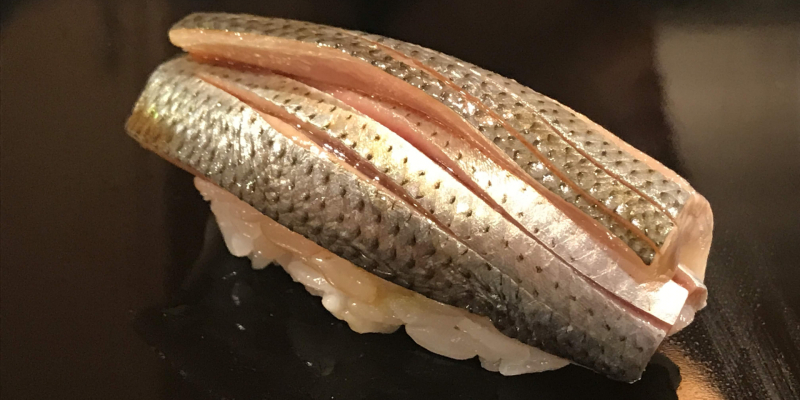
“Kohada コハダ” (Gizzard shad) is a type of dazzling silverfish similar to Saba, Iwashi, and Aji. Their tastes are also somewhat alike.
Kohada is often cured with salt and vinegar, then woven decoratively on the top of the sushi rice to showcase its beautiful silver skin.
19. Uni (Sea Urchin)
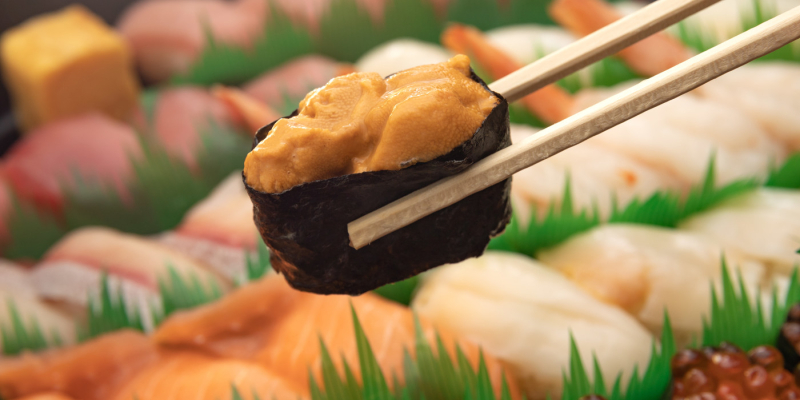
“Uni ウニ” (sea Urchin) is an expensive delicacy used for Japanese cuisine. The orange colored roe has a creamy rich texture which melts into your mouth. It is often served as a ship roll called “Gunkan-maki 軍艦巻き”. You can eat the richer taste of Uni in the best season between May and September in Japan.
20. Hotate (Scallops)
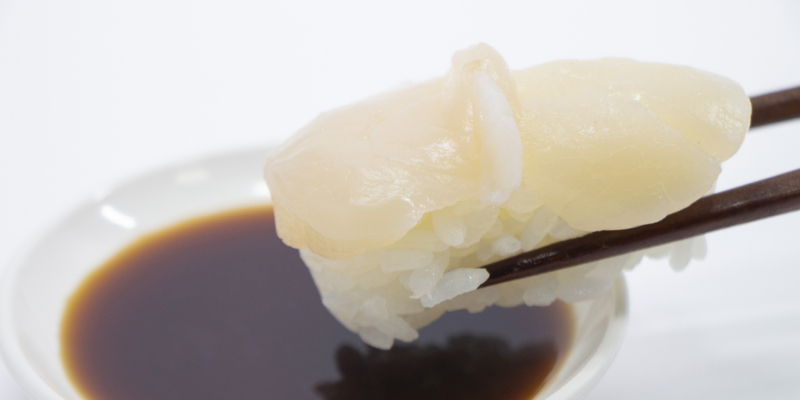
“Hotate ホタテ” (Scallops) is one of the most popular shellfish for sushi, and a common favorite with children in Japan. The glossy meat has a smooth texture and sweet creamy taste. It is served raw or slightly grilled to enhance its sweetness.
21. Unagi (Freshwater Eel)

22. Ebi (Shrimps/Prawns)
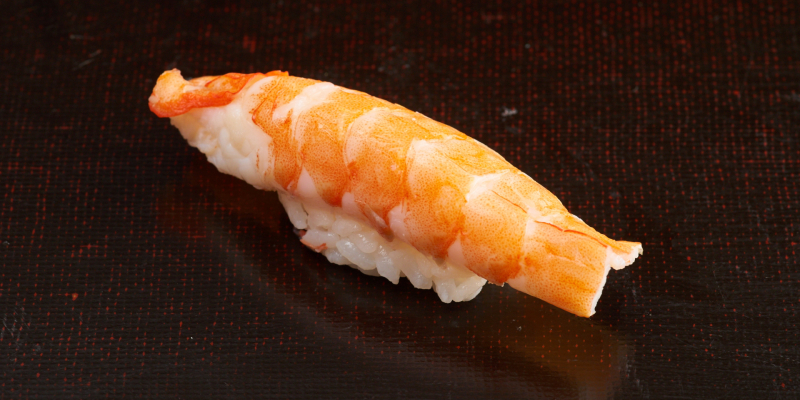
There are many types of shrimps (prawns) called “Ebi エビ” used for sushi in Japan. They are sweet and small “Ama-ebi 甘エビ”, precious and large “Kuruma-ebi 車エビ”, and plump “Botan-ebi 牡丹エビ”. They have a subtle flavor and are usually served raw or boiled with the tails left for decorative purpose.
23. Hokkigai ホッキガイ (Surf clam)
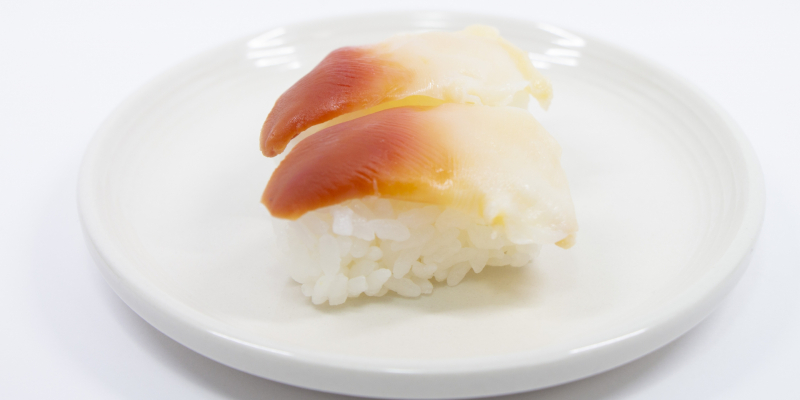
“Hokkigai ホッキガイ” (Surf clam) is prepared and eaten in various ways including a prized sushi topping in Japan. This bright pink colored clam has a mild sweet flavor and meaty texture. It is served raw or lightly boiled to enhance its color and chewy texture.
24. Wagyu (Japanese beef)
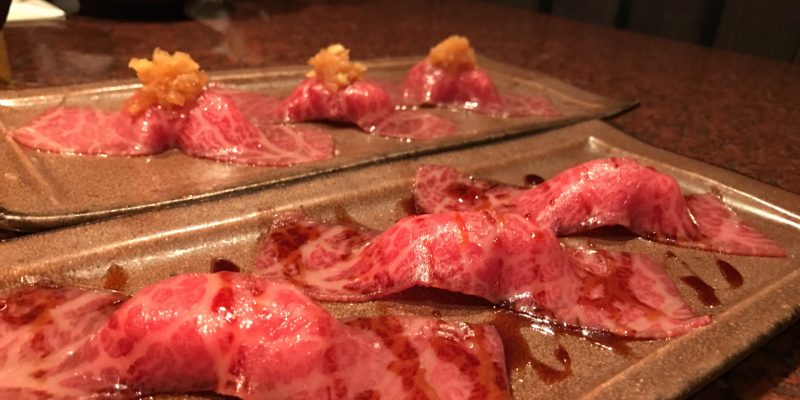
Beef is not a traditional topping for sushi, but today it is quite popular around the world. “Wagyu 和牛” (Japanese beef) is famous for its fatty marbling appearance which has a rich and slightly sweet flavor. It is served raw or slightly grilled (Aburi style) that enhances its juicy teste.
25.Tamagoyaki (Japanese rolled omelet)
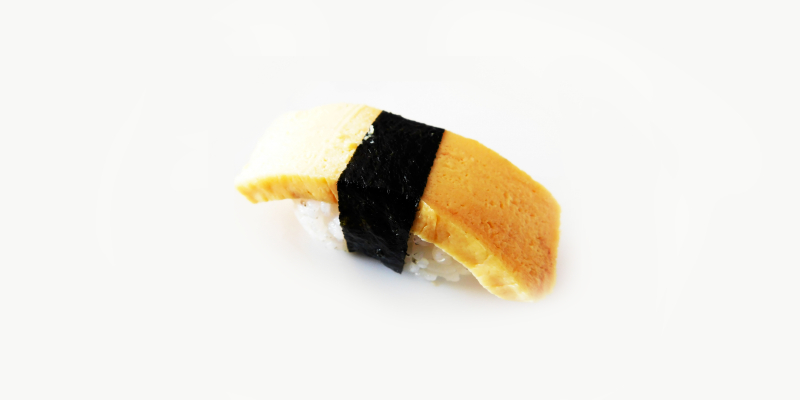
“Tamagoyaki 卵焼き” (Japanese rolled omelet) is a popular sushi topping especially among children. This topping is made by rolling thin layers of egg seasoned with soy sauce, sugar, and dashi. It has slightly sweet, rich and deep flavors added by umami from dashi.
Conclusion
Sushi in Japan has a wide variety of ingredients to choose from.

I hope that this article helps you navigate your amazing sushi experience. Try as many different toppings as you can!

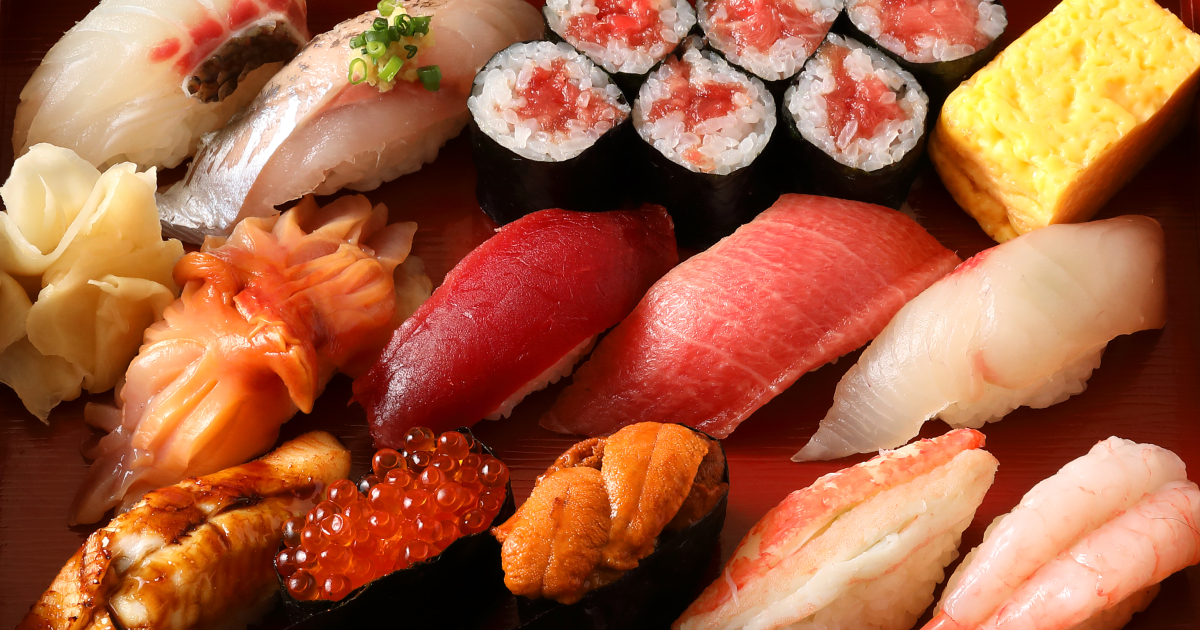


Comments